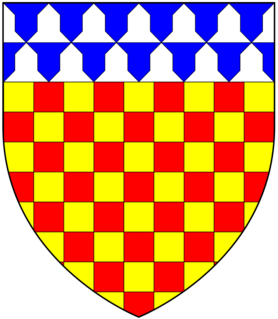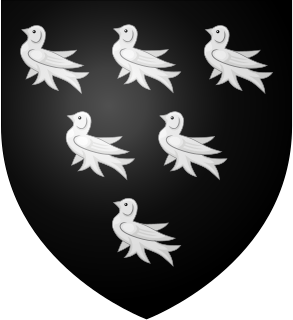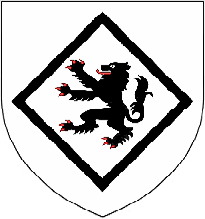
Earl of Iddesleigh, in the County of Devon, is a title in the Peerage of the United Kingdom. It was created in 1885 for the Conservative politician Sir Stafford Northcote, 8th Baronet, of Pynes in the parish of Upton Pyne near Exeter in Devon and lord of the manor of Iddesleigh, 28 miles north-west of Pynes. He served as President of the Board of Trade, Secretary of State for India, Chancellor of the Exchequer, First Lord of the Treasury and Foreign Secretary and was Joint Leader of the Conservative Party from 1881 to 1885. Northcote was made Viscount St Cyres, of Newton Saint Cyres in the County of Devon, at the same time he was given the earldom. This title is also in the Peerage of the United Kingdom.

Viscount Southwell, of Castle Mattress in the County of Limerick, is a title in the Peerage of Ireland. It was created in 1776 for Thomas Southwell, 3rd Baron Southwell. The Southwell family descends from Thomas Southwell. In 1662 he was created a Baronet, of Castle Mattress in the County of Limerick, in the Baronetage of Ireland. He was succeeded by his son, the second Baronet. He represented Limerick County in the Irish Parliament. In 1717 he was created Baron Southwell, of Castle Mattress, in the County of Limerick, in the Peerage of Ireland. His grandson was the aforementioned third Baron, who was elevated to a viscountcy in 1776. Before succeeded in the barony he had represented Enniscorthy in the Irish House of Commons. His great-grandson, the fourth Viscount, served as Lord Lieutenant of County Leitrim between 1872 and 1878. As of 2010 the titles are held by his great-grandson, the seventh Viscount, who succeeded his uncle in 1960.

Baron Hesketh, of Hesketh in the County Palatine of Lancaster, is a title in the Peerage of the United Kingdom. It was created in 1935 for Sir Thomas Fermor-Hesketh, 8th Baronet, who had previously briefly represented Enfield in the House of Commons as a Conservative. As of 2010 the titles are held by his grandson, the third Baron, who succeeded his father in 1955. Lord Hesketh held junior ministerial positions in the Conservative administrations of Margaret Thatcher and John Major. However, he lost his seat in the House of Lords after the House of Lords Act 1999 removed the automatic right of hereditary peers to sit in the upper chamber of Parliament.

Baron Hazlerigg, of Noseley in the County of Leicester, is a title in the Peerage of the United Kingdom. It was created in 1945 for Sir Arthur Hazlerigg, 13th Baronet. He had previously served as Lord Lieutenant of Leicestershire. As of 2017 the titles are held by his grandson, the third Baron, who succeeded his father in 2002.

There have been four baronetcies created for members of the Acland family, which originated in the 12th century at the estate of Acland in the parish of Landkey, North Devon, two in the Baronetage of England and two in the Baronetage of the United Kingdom.
The High Sheriff of Devon is the Queen's representative for the County of Devon, a territory known as his/her bailiwick. Selected from three nominated people, they hold his office over the duration of a year. They have judicial, ceremonial and administrative functions and executes High Court Writs. The office historically was "Sheriff of Devon", changed in 1974 to "High Sheriff of Devon".

There have been three baronetcies created for persons with the surname Chichester, one in the Baronetage of England and two in the Baronetage of the United Kingdom. Only the 1641 creation is extant.

There have been four baronetcies created for persons with the surname Miller, two in the Baronetage of England, one in the Baronetage of Great Britain and one in the Baronetage of the United Kingdom. Two of the creations are extant as of 2008.
There have been three baronetcies created for persons with the surname Newman, one in the Baronetage of England and two in the Baronetage of the United Kingdom. Two of the creations are extant as of 2007.
Sir Hugh Acland, 6th Baronet of Killerton Devon was a British landowner and politician who sat in the House of Commons from 1721 to 1727.

Sir Thomas Dyke Acland, 7th Baronet of Killerton in Devon and Petherton Park in Somerset, was Member of Parliament for Devon, 1746–1747, for Somerset, 1767–1768, and was High Sheriff of Somerset in 1751. He was a prominent member of the West Country gentry, and a famous staghunter who used as his hunting seats his wife's Exmoor estates of Pixton and Holnicote.

Combe Sydenham is an historic manor in Somerset, England. The 15th-century manor house, called Combe Sydenham House is in the parish of Stogumber, Somerset and is situated just within the boundary of Exmoor National Park. It is a grade I listed building.
The Wroth Baronetcy, of Blenden Hall in the County of Kent, was a title in the Baronetage of England. It was created on 29 November 1660 for John Wroth. The baronetcy became extinct upon the death of the third Baronet in 1721. The third Baronet, whose seat was Petherton Park in Somerset, was Member of Parliament for Bridgwater, for Somerset and for Wells. The title became extinct on his death in 1721.
The Langford Baronetcy, of Kilmackedrett in the County of Antrim, was a title in the Baronetage of Ireland. It was created on 19 August 1667 for Hercules Langford. The title became extinct on the death of the third Baronet in 1725. Mary, daughter of the first Baronet, married Sir John Rowley. Their grandson Hercules Langford Rowley married Elizabeth Upton, who was created Viscountess Langford in 1766. Their daughter the Hon. Jane Rowley married Thomas Taylour, 1st Earl of Bective. Lord and Lady Bective's fourth son Clotworthy Rowley was created Baron Langford in 1800.

John Arundell, 2nd Baron Arundell of Trerice of Trerice, Cornwall, was an English politician who sat in the House of Commons at various times between 1666 and 1687 when he inherited his peerage.
John Chichester may refer to:

Roborough is a village and civil parish 5.5 mi (8.9 km) from Great Torrington. Situated topographically on the plateau between the Torridge and Taw Rivers, the parish covers 1,258 ha and contains a population of some 258 parishioners. It is surrounded by a pastoral landscape of rectangular fields, high hedges and scattered farmsteads.

'Tom Putt' is a traditional variety of dual purpose apple, often used as a cider apple, originating in Devon. It was also known as Ploughman, Coalbrook, Marrowbone, Thomas Jeffreys and by many other local names.

Gittisham is an historic manor largely co-terminous with the parish of Gittisham in Devon, England, within which is situated the village of Gittisham. The capital estate is Combe, on which is situated Combe House, the manor house of Gittisham, a grade I listed Elizabethan building situated 2 1/4 miles south-west of the historic centre of Honiton and 3 1/4 miles north-east of the historic centre of Ottery St Mary.















